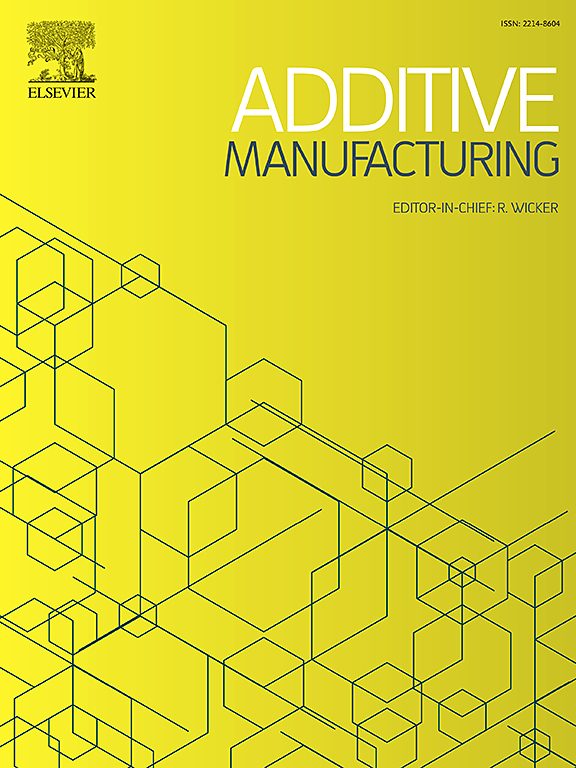Water-based hydroxyapatite photocurable feedstock for the manufacture of architectured parts by vat photopolymerization
IF 10.3
1区 工程技术
Q1 ENGINEERING, MANUFACTURING
引用次数: 0
Abstract
Hydroxyapatite (HAp) is a biocompatible, osteoconductive, and biodegradable material widely studied for tissue engineering applications. Additive manufacturing, particularly vat photopolymerization technologies, enable the manufacture of custom-made, highly precise solutions. In this work, a colloidal approach was used to develop a water-based photocurable HAp-loaded feedstock with low viscosity, high solid loading (45 vol%), and low amount of organic compounds (10 vol%). Two distinct types of dispersants were evaluated to modify the surface of the HAp powders to enhance stability and dispersion. Rheological experiments were conducted to determine the optimal dispersant concentration, solid-loading, and pre-polymer content. Photorheological experiments were also performed to identify the printing parameters suitable for the vat photopolymerization technology. This work’s approach, characterized by its low organic content, enabled a fast-debinding process (≈13.5 h) when compared to the conventional photocurable ceramic-based feedstock. Different sintering temperatures were tested (1150 °C → 1350 °C) and X-ray diffraction was used to evaluate the crystallographic composition at each temperature. Additionally, the relative density of the sintered parts was calculated and the compressive strength determined. The results demonstrated that sintering temperature enables high customization to meet specific end-user requirements. Architectured structures with interconnected porosity were successfully printed as a proof-of-concept of the potential printability of the developed aqueous-based feedstock. The eco-friendly photopolymerizable feedstock developed in this work should strongly impact the production cycle of resorbable bioceramic-based components.
求助全文
约1分钟内获得全文
求助全文
来源期刊

Additive manufacturing
Materials Science-General Materials Science
CiteScore
19.80
自引率
12.70%
发文量
648
审稿时长
35 days
期刊介绍:
Additive Manufacturing stands as a peer-reviewed journal dedicated to delivering high-quality research papers and reviews in the field of additive manufacturing, serving both academia and industry leaders. The journal's objective is to recognize the innovative essence of additive manufacturing and its diverse applications, providing a comprehensive overview of current developments and future prospects.
The transformative potential of additive manufacturing technologies in product design and manufacturing is poised to disrupt traditional approaches. In response to this paradigm shift, a distinctive and comprehensive publication outlet was essential. Additive Manufacturing fulfills this need, offering a platform for engineers, materials scientists, and practitioners across academia and various industries to document and share innovations in these evolving technologies.
 求助内容:
求助内容: 应助结果提醒方式:
应助结果提醒方式:


